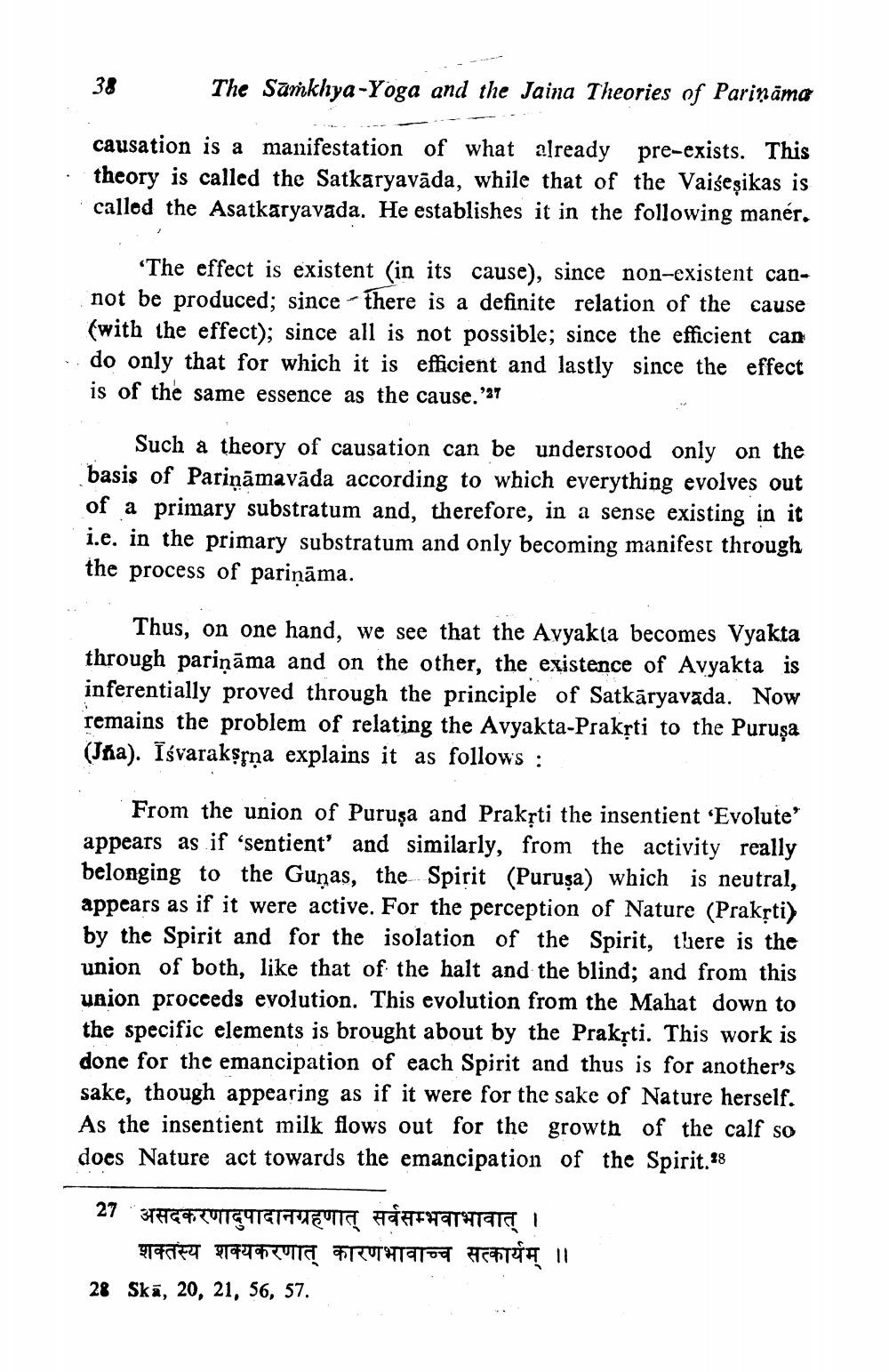________________
38
The Samkhya-Yoga and the Jaina Theories of Pariņāma
causation is a manifestation of what already pre-exists. This theory is called the Satkaryavāda, while that of the Vaišeşikas is called the Asatkaryavada. He establishes it in the following manér.
'The effect is existent (in its cause), since non-existent cannot be produced; since - there is a definite relation of the cause (with the effect); since all is not possible; since the efficient can do only that for which it is efficient and lastly since the effect is of the same essence as the cause. 27
Such a theory of causation can be understood only on the basis of Pariņāmavāda according to which everything evolves out of a primary substratum and, therefore, in a sense existing in it i.e. in the primary substratum and only becoming manifest through the process of pariņāma.
Thus, on one hand, we see that the Avyakta becomes Vyakta through pariņāma and on the other, the existence of Avyakta is inferentially proved through the principle of Satkāryavada. Now remains the problem of relating the Avyakta-Praksti to the Puruşa (Jña). īśvaraksýna explains it as follows :
From the union of Puruşa and Praksti the insentient 'Evolute' appears as if ‘sentient and similarly, from the activity really belonging to the Guņas, the Spirit (Purusa) which is neutral, appears as if it were active. For the perception of Nature (Prakrti) by the Spirit and for the isolation of the Spirit, there is the union of both, like that of the halt and the blind; and from this union proceeds evolution. This evolution from the Mahat down to the specific elements is brought about by the Prakṣti. This work is done for the emancipation of each Spirit and thus is for another's sake, though appearing as if it were for the sake of Nature herself. As the insentient milk flows out for the growth of the calf so does Nature act towards the emancipation of the Spirit.18
27 369. UTGITT UTE HATHTETET I
शक्तस्य शक्यकरणात् कारणभावाच्च सत्कार्यम् ॥ 28 Skā, 20, 21, 56, 57.




